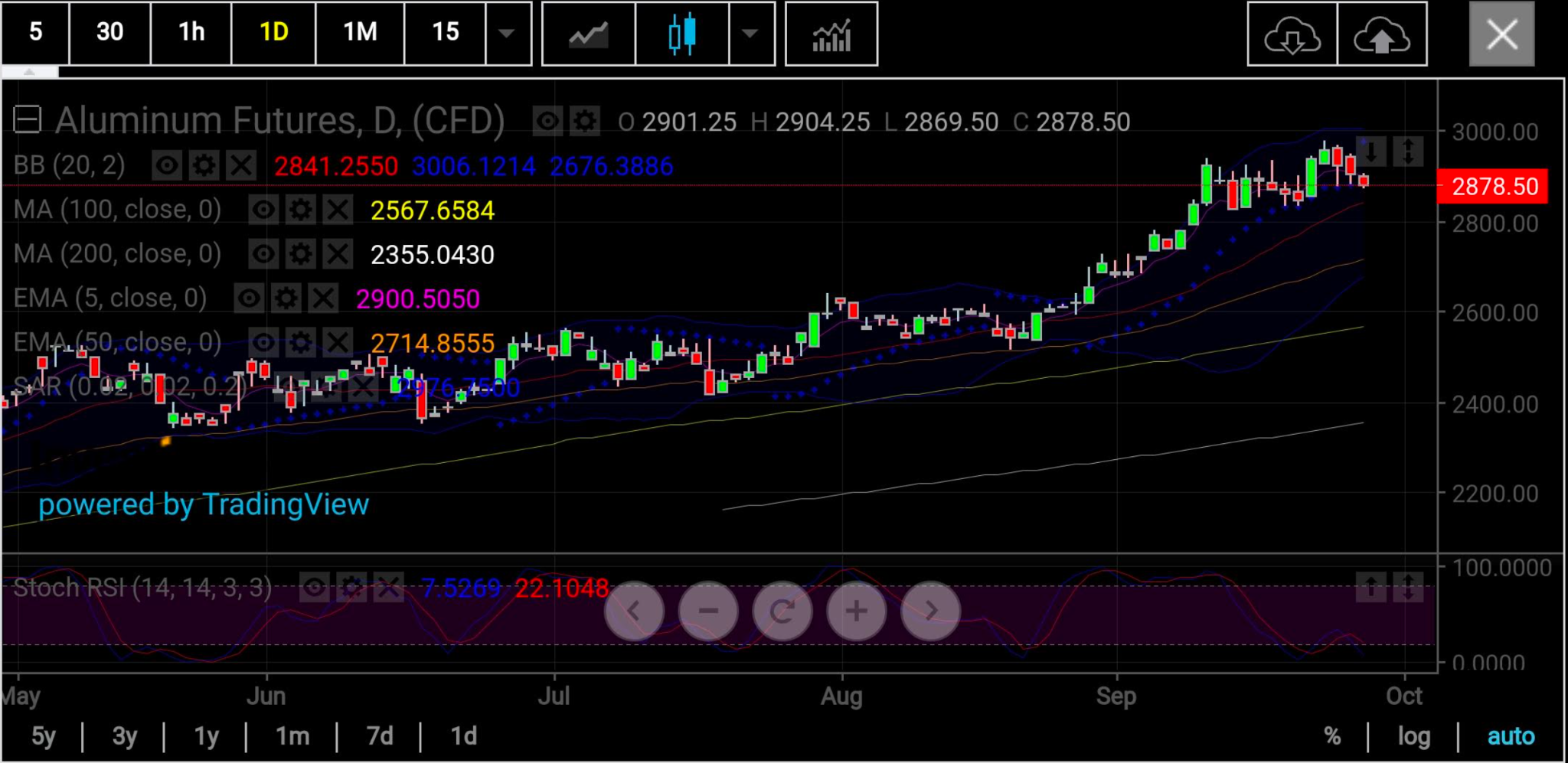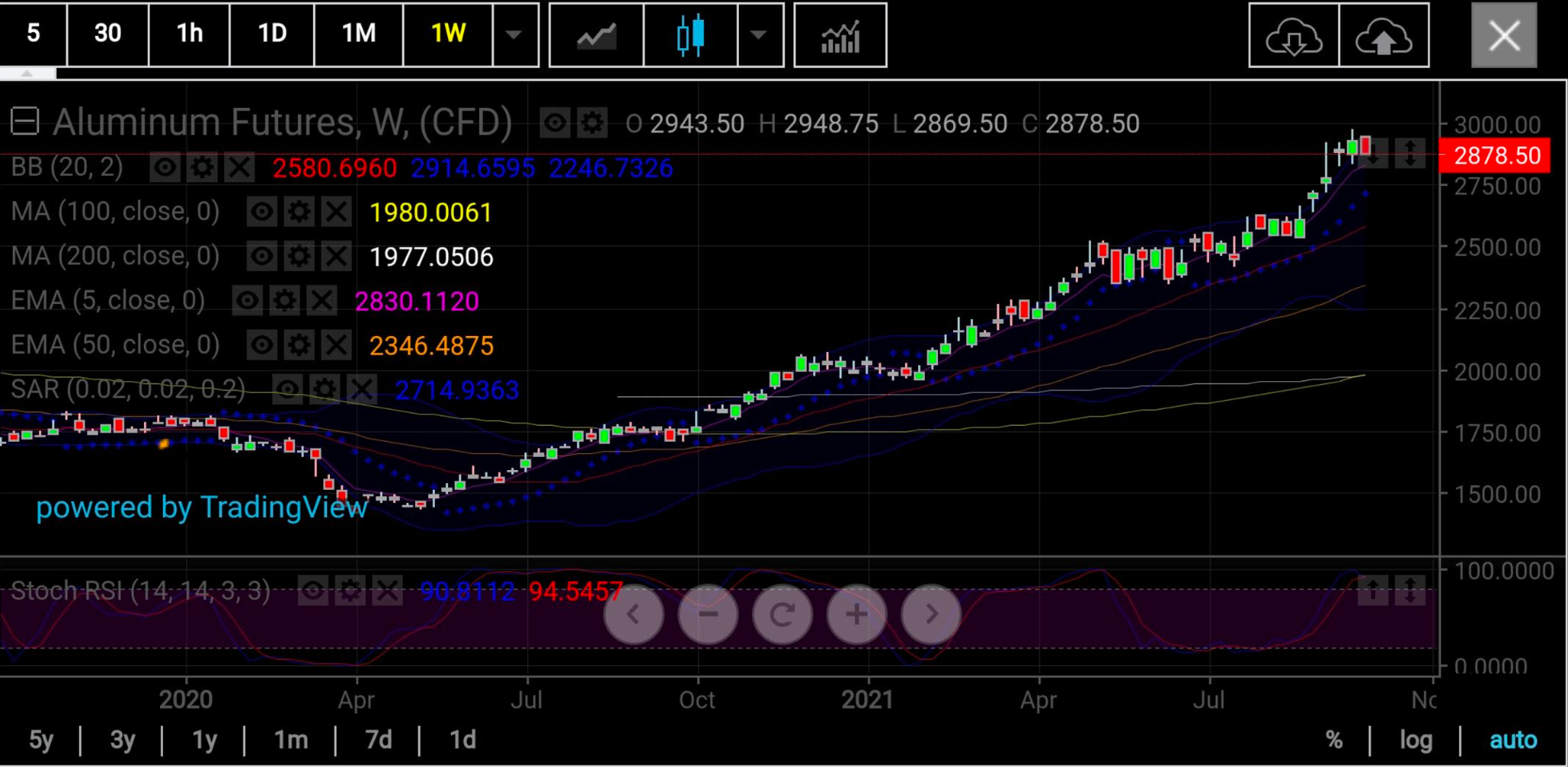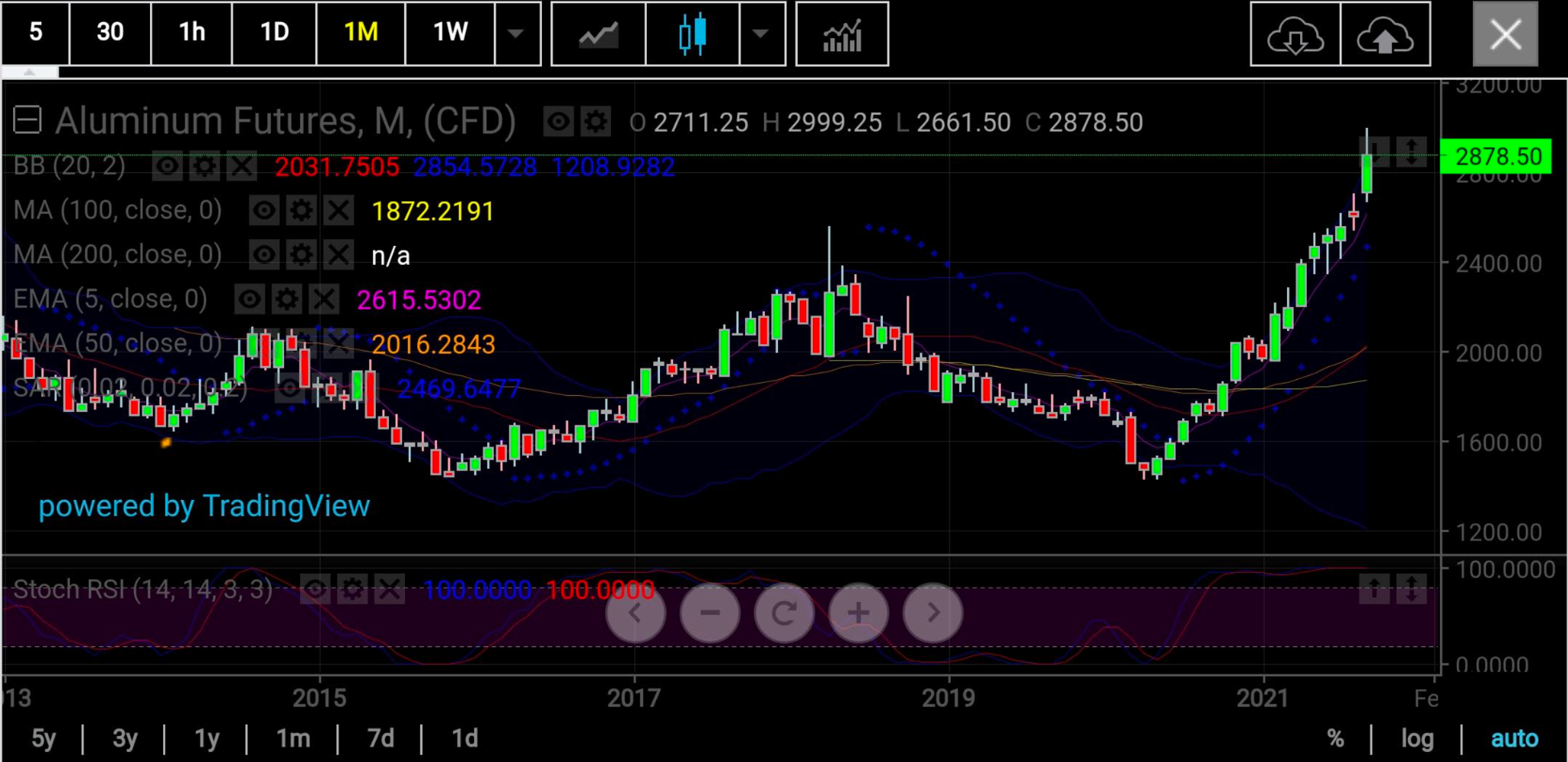And the honor for best metal in September goes to … the quietest in the class.
If you’ve been fixated on gold and silver, or for that matter palladium and platinum, you might have missed seeing aluminum’s supercharged run this month. For the first time in almost a year, it is up double-digits for a month, making it the best-performing metal in September.
While the gain might be extraordinarily large for aluminum, that it happened during a month when almost every other metal flopped spectacularly makes it all the more remarkable.
At Tuesday’s pre-open on the London Metal Exchange, three-month aluminum was at $2,883 a tonne. Month-to-date, that was up 10.3% higher from the August close of $2,610.50.
If that spot price of LME aluminum hovers just around there until Thursday, it would book the largest monthly gain in 3-½ years that goes back to April 2018, when it rose 13.7%.
The other major milestone for aluminum, of course, is the 10-year high hit last week by the LME spot month when it got to $2,976.75 a tonne.
All other major metals are showing losses for September, with gold down 4%; silver 6%; copper 1% and platinum 3%.
What’s the story behind aluminum and will it be able to retain its mojo?

All charts courtesy of SK Charting
Supply constraints in China and strong demand had combined into September’s price explosion in LME aluminium. To the uninitiated, aluminum prices have actually been rallying every month this year, since February. The highest return before this month was 9% in April. Year-to-date, it is up 46%, still trailing tin’s blow-out gain of 72%.
Daniel Hynes, commodity analyst at ANZ Commodity, wrote in a recent blog about aluminum:
“The metal, which is used for everything from car parts to home appliances, has fared well as consumer demand and economic activity bounce back. However, it’s the rising risk of further supply disruptions in China that is causing angst in the market.”
China—the world’s largest aluminium producer—been cracking down on pollution enforcing reforms aimed at decarbonising the country’s economy. The Chinese government capped electricity consumption for energy-intensive industries such as aluminium and steel production earlier this year. Coupled with power shortages in many parts of China, several aluminium smelters in the province of Guangxi and Xinjiang were required to cap output for the year.

ABN Ambro said in a report published in May:
“[The firmer aluminium price] was triggered by optimism over global economic recovery, hopes of longer-term robustness of metals demand in relation to the energy transition and worries over future supply trends."
Lower Chinese aluminum output could also support prices. Many Chinese provinces incentivise aluminum production by offering reduced power tariffs to metal producers. However, the Chinese government has banned the practice of preferential electricity tariffs for the aluminum industry in a decarbonisation policy announced on Aug. 27. This policy is part of China’s reform to transition to a green, low-carbon economy.
Despite the glowing fundamentals, the chart action for aluminum itself suggests some cooling-off may be coming to a market that had risen for eight months non-stop.
Sunil Kumar Dixit, chief technical strategist at SK Charting in India, said notwithstanding September’s blockbuster showing, aluminum’s daily price action chart showed a correction running for a third straight day, evidently pressured by last week’s 10-year high.
He added:
“The daily chart aside, weekly and monthly indicators clearly show that aluminum has been riding a furious and parabolic wave.”
“The monthly chart’s Stochastic Relative Strength Indicator reading of 100/100 gives a shout out of a rally overdone and for a correction to start any time soon, that will aim to revisit the areas of $2,700-$2,500 as immediate targets.”
“Prices can go weak below $2,840 and test the 50-Day Exponential Average of $2,715.”

Dixit said he did not see any major price bump for aluminum beyond the $3,000 level, at least not until significant correction that would bring it to between $2,500 and $2,300.
“We take a contrarian view to crowd sentiment,” he added.
But what if aluminum defied the selling pressure and somehow kept its upside intact?
What’s the potential then?
“The Middle Bollinger Band at $2,841 can support metal prices and a sustained move above $2,900 can give an upside to test $3,006,” said Dixit.
A stochastic RSI reading of 7/22 will mean aluminum has entered oversold territory at least for the short term and a temporary bounceback may come.”
Disclaimer: Barani Krishnan uses a range of views outside his own to bring diversity to his analysis of any market. For neutrality, he sometimes presents contrarian views and market variables. He does not hold a position in the commodities and securities he writes about.
